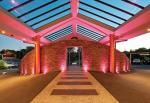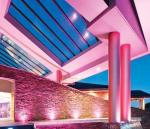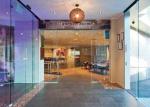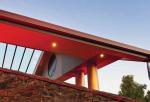New Benchmark For RSA Clubs
While some traditional sports and RSA clubs are facing difficult times maintaining membership and commercial viability, Swanson RSA is bucking the trend big time.
Having undergone an extensive makeover, which involved demolishing and rebuilding 70% of the existing building, one of Swanson’s most iconic community facilities has been totally transformed and has more than doubled its membership.
Bar, restaurant and club activity revenues have increased well in excess of projections, and newly created business facilities within the complex are thriving.
So is this how clubs in New Zealand will evolve in the future?
New thinking
The way people interact socially has changed significantly over the last 20 years, and traditional club-type venues are facing everincreasing competition from more modern and sophisticated dining and entertainment alternatives. The designer of Swanson’s makeover, Grant Watson from Pure Design, has extensive experience with commercial entertainment facilities, and has a good insight into the issues.
“There are RSAs that do very well and there are RSAs that struggle.
It’s much the same with all clubs. The ones struggling are run in a traditional way as a closed club. The successful ones are being run to meet the demand.
“The reason Swanson is so successful is that they have some self employed guys on the committee that know how to run a business. As a national organisation, the RSA has just announced a new strategy to refocus the RSAs as community clubs. This is exactly what we discussed back in 2004 when we started this project.”
Building a business
Spokesman for the Swanson RSA building committee, treasurer Roger Cooksley, was one of the prime movers in the project and says the original objectives have been well and truly met.
“The buildings we were in had been around for nearly 30 years and they were very tired. But instead of just refurbishing, we wanted to go that extra step to get something that was more modern and appropriate to attract new members and make the whole experience more pleasing.”
Grant recalls: “There was a clear opportunity to increase their overall business potential beyond traditional RSA activities. There was an opportunity to make a seminar venue for conferences during the week, and of course, the restaurant is right next door.
“We set up the restaurant in a way so that you can have a seminar running in the function room and a separate seminar running in the restaurant if need be. Or you can put them together. What we tried to do is take the brief and make the facilities as flexible as possible.”
Noise issues
The project was planned in three stages to minimise disruption to the club’s day-to-day activities, and while the major building, fit-out and landscaping work was effectively achieved in less than two years, resource consent caused significant delays in the early days.
Roger is pretty candid in his views. “Getting resource consent was the biggest problem by far and it was pain. It took damn near six years and hundreds of thousands of dollars.” Grant remembers it well. “The major issue was the club’s location in a residential area, and we were up front right at the start with our plans and invited the community to participate. Unfortunately, immediately thereafter, we got a whole lot of abatement notices because people thought because we were going to get bigger, we’d get louder.
“The fact is we’re now much quieter than before. We spent a huge amount installing noise control systems. A full band can be playing in the function room now at full noise and you can’t really hear them outside.
“We stripped all the exterior and interior linings, put in noise insulation inside the walls, put back a higher density exterior lining, then left a 100mm gap and built another wall inside that. We filled that space with acoustic insulation and then double lined it with noise rated plasterboard.
“The whole ceiling has a 300mm deep plywood box filled with acoustic material suspended above the acoustic absorbent ceiling panels.”
Sustainability
Sustainability issues were also closely addressed, and while budget limitations due to the cost of resource consent limited what could be done, the facilities are car park goes through a sand filter and is stored in a tank to water the gardens. We harvest enough from the car park to water our gardens for six months of the year, and we have another tank that collects roof water for use in the bathrooms.
“To reduce energy consumption, a lot of the lighting in the complex uses LED lights where practical. While they are more expensive than the halogen lights previously used, they last for 50,000 hours plus compared to halogen, which lasts between 1000 to 1500 hours. And halogen uses 50 watts of power whereas LED uses only 17 watts.” A bonus of the LED system is that it adds a real wow factor as all the lights throughout the complex can be colour co-coordinated.
“We can turn the whole building green on St Paddy’s day, pink for breast cancer day, red for Xmas. We can adjust RGB colours and choose from over 16 million colours,” says Grant.
Material selection
While the Swanson RSA building committee left most of the materials selection decisions to Grant and his design company, there was one aspect of the old building they wanted to retain. “The building committee wanted the same roof,” Roger recalls. “As far as we were concerned, we were happy with what we had.
The Gerard roof had been there for nearly 30 years without any hassle and had given us no problem whatsoever, so we thought we’d stick with that.”
From the designer’s point of view, it also ensured the building would blend in with the surroundings. “The complex is smack in middle of a residential area, so it was important for us that it look like part of that immediate community,” says Grant. “Basically, we tried to make it look like a house, albeit a big house.”
Due to the complex planning issues, the Swanson RSA project is one of the most protracted jobs Grant has ever worked on, and while it is an unqualified success, Grant is clear about who deserves the glory.
“This journey took six years of town planning, land court hearings and dogged determination on the part of the project team to get to the point of starting the building process. They have been totally selfless and passionate.





